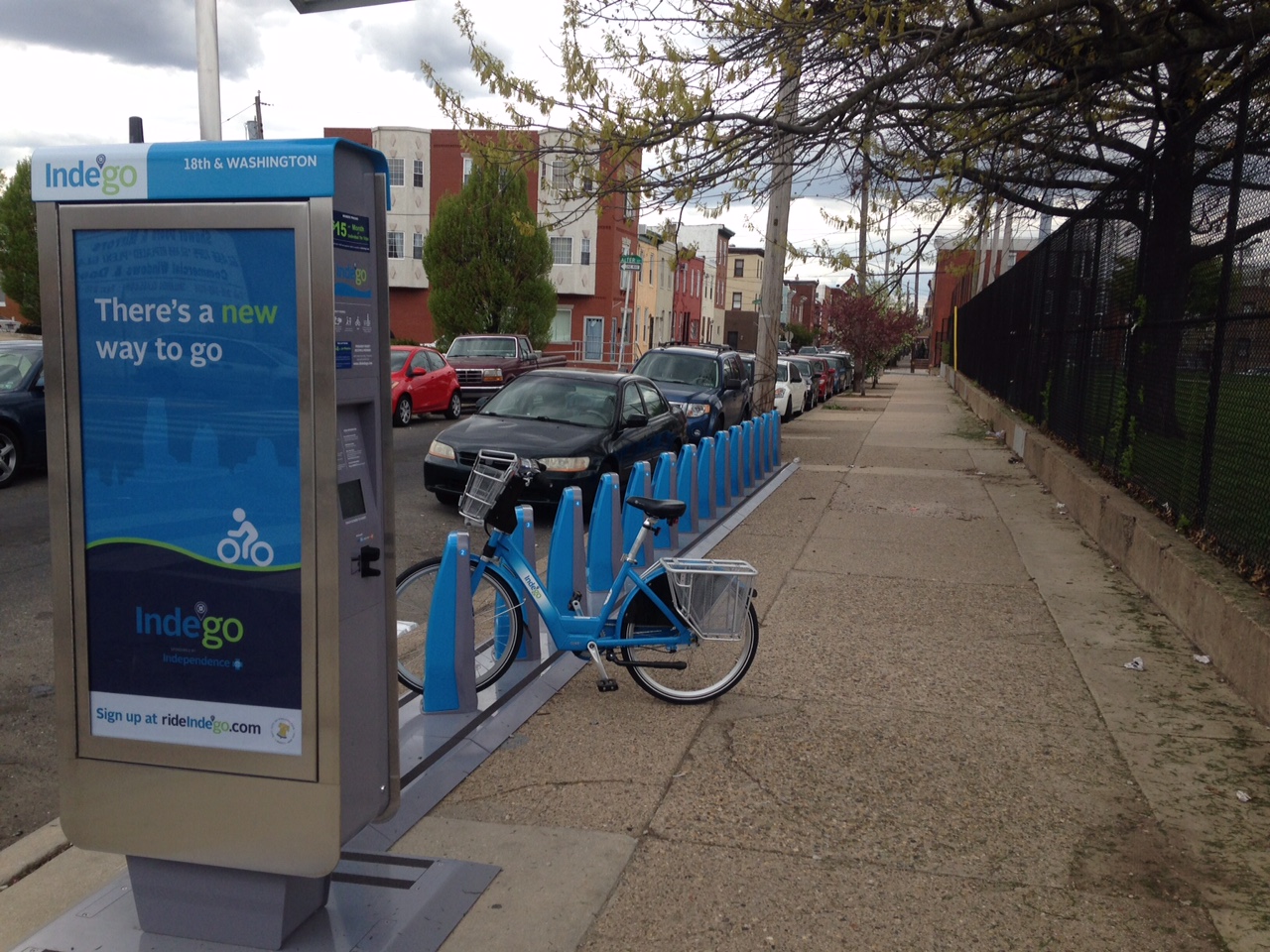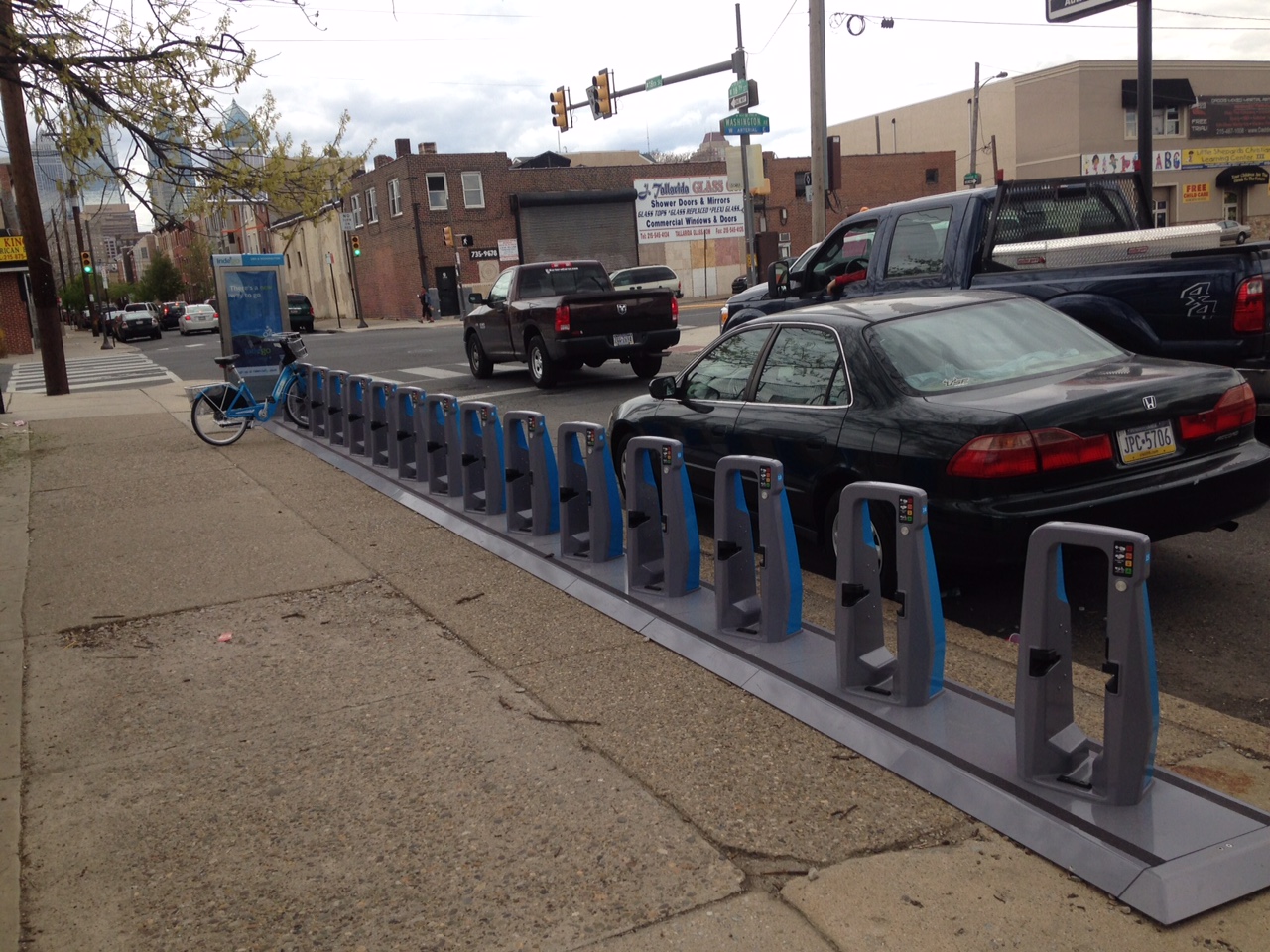“Hey, where’s my ride?!” – Indego Bike Share rebalancing act

On Friday morning, Saturday night, Sunday afternoon and again this morning, the Indego bike share docking station outside my house was empty.
And that’s a good thing (no, really). It means that my neighbors in Point Breeze are taking to Indego like fat kids to cronuts: there was an inchoate, unmet demand there that has only become articulated following bike share’s launch.
But for would-be riders, walking up to an empty station is a pretty big bummer.
The station at 18th and Washington was nearly full when I left for work at 7:40 this morning, but completely empty when I returned around 11 to grab something I had accidently left at home. I’ve twice seen my roommate, Ben, leave to grab a bike, only to walk back minutes later, dejected by their temporary dearth. An excitable sort prone to hyperbole, Ben likened it to flying to Disney World only to find out that “It’s a Small World” is closed for renovations. (After a brief, yet animated, discussion, he agreed that the analogy was a bit of an overstatement; also, that one of those two was an extremely creepy thing to do as a single, childless adult.)
Good news is on its way, though: stations that are either completely full or completely empty should become more rare as tweaks to bike deployments are made.
The Mayor’s Office of Transportation and Utilities, and Bicycle Transit, the consulting firm that’s helping to oversee Indego’s implementation, will soon begin analyzing ridership data and adjusting operations accordingly.
When bicycles end up packing one station, making it unusable as a docking location, or empty out of others, a team manually rebalances them using trucks. Right now, predicting which stations will get overused, one way or the other, is difficult because there are so many random rides from people just trying it out.
“The first two months are always the hardest, because there are no patterns yet,” Bicycle Transit’s Peter Hoban told PlanPhilly in an interview before Indego’s launch.
Once patterns are established, the rebalancing operations should improve.
And after a handful of months, the Indego team will be able to tell which stations are consistently jammed or emptied and respond with increased docks at those stations, or by adding new stations nearby.
The Indego team gets data in real time, so there is no need to email or tweet about empty spots or packed stations, said MOTU’s Andrew Stober. Stober recommended using the B-Cycle app or checking online before you leave to make sure there is a bike to pick up and a free dock where you want to park.
RIDING HIGH
So far, all the news about Indego has been good. Even noted anti-bicycle crank Stu Bykofsky had nice things to say about his ride. It seems like everyone who has ridden one has reported the need to answer lots of questions from curious onlookers.
And just three days in, there has been a lot of curiosity stoked by those sky-blue spokes: There have been 1,200 monthly memberships, over 1,000 walk up rides, and around 3,500 rides so far. That works out to about two rides per bike a day. Stober described those numbers as a “really great” start.
Of course, it’s too early to declare Indego a success – the 2014 Eagles started 3-0, after all, and ended up missing the playoffs – but a good start beats a bad one, any day (besides, unless you’re the average WIP caller, it’s tough to blame the Birds for missing the playoffs with a 10-6 record).
Stober also asked PlanPhilly to mention one, small problem folks seem to be having: making sure they’ve properly docked their bikes. “We’ve been seeing less and less of it over the three days,” said Stober. “But when people check [a bike] in, push it fully into the dock, and make sure you hear that beep, see that green light.” To make sure it’s in, give it a light tug before you walk away.
WHYY is your source for fact-based, in-depth journalism and information. As a nonprofit organization, we rely on financial support from readers like you. Please give today.




